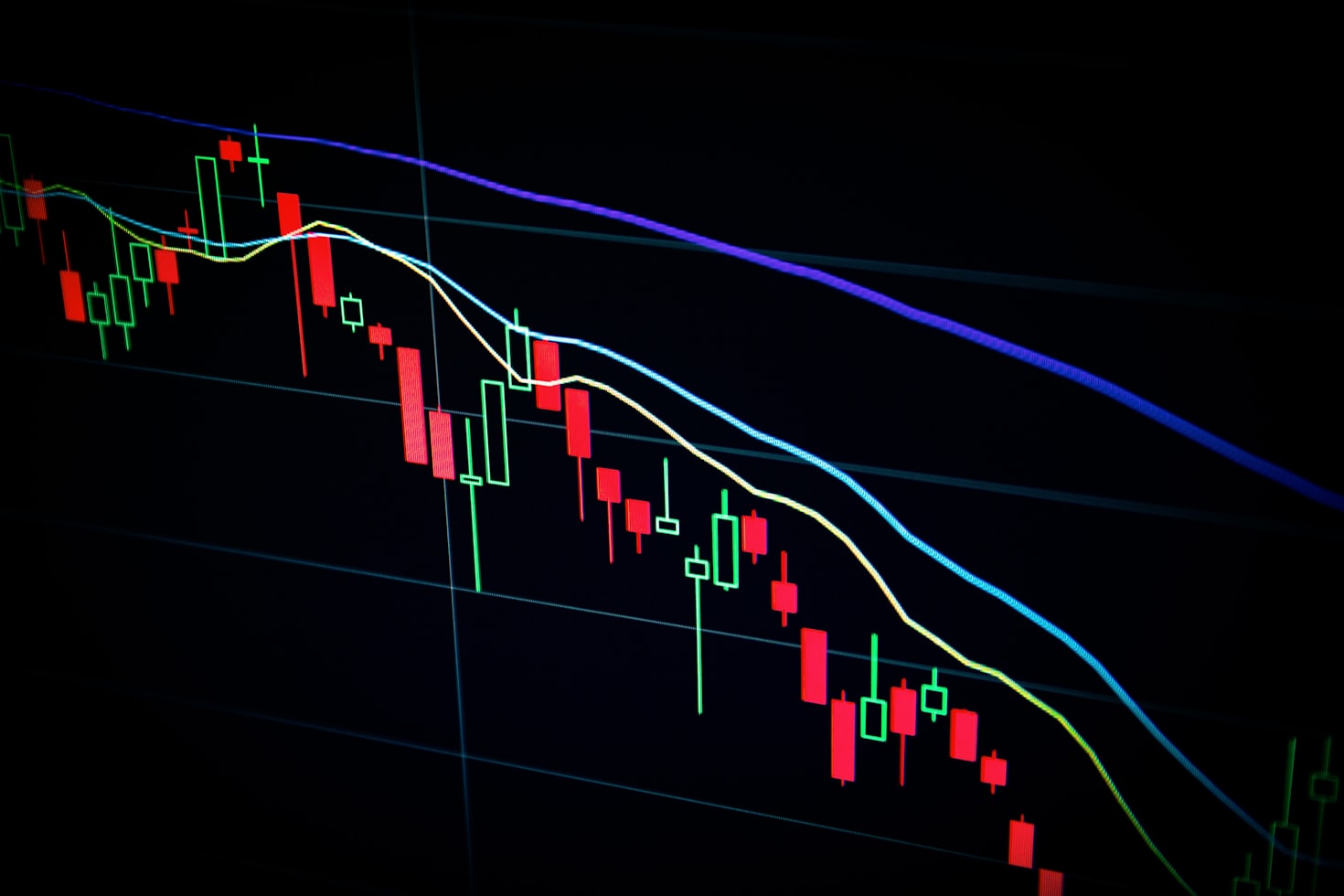Forex trading, or foreign exchange trading, has gained significant popularity in India as a way to potentially generate income from currency price movements. Many beginners are attracted to forex trading because of the possibility to start with relatively small capital - as little as ₹10,000. However, it's crucial to understand the legal framework, risks, and proper strategies before diving in.
You can legally start forex trading in India with just ₹10,000 by using SEBI-regulated brokers that offer currency derivatives trading on Indian exchanges. However, trading international forex markets directly is restricted by RBI regulations.
In this comprehensive guide, we'll walk you through everything you need to know to start forex trading in India with a small capital, while staying compliant with Indian regulations.
Table of Contents
Is Forex Trading Legal in India?
Before you start trading, it's essential to understand the legal framework surrounding forex trading in India. The Reserve Bank of India (RBI) and the Securities and Exchange Board of India (SEBI) regulate all foreign exchange transactions in the country.
What's Allowed: Trading currency derivatives (USD-INR, EUR-INR, GBP-INR, JPY-INR) on SEBI-regulated Indian exchanges like NSE, BSE, and MCX-SX is completely legal.
What's Restricted: Trading directly in the international forex market (like EUR/USD, GBP/USD) through foreign brokers is not permitted under current RBI regulations, except for certain authorized entities.
The Liberalized Remittance Scheme (LRS) allows Indian residents to remit up to $250,000 per financial year for permitted current or capital account transactions. However, forex trading is not one of the permitted activities under LRS.
Trading with international forex brokers that accept Indian clients may seem tempting but is technically illegal and could lead to account freezes or legal issues. Always use SEBI-regulated brokers for forex trading in India.
SEBI-Regulated Forex Trading Options
For Indian traders, the legal way to participate in forex trading is through:
- Currency Derivatives: Futures and options contracts on currency pairs offered by Indian exchanges
- Forex ETFs: Exchange-traded funds that track currency movements
- Forex Funds: SEBI-regulated mutual funds with forex exposure
Getting Started with ₹10,000
Starting forex trading with ₹10,000 is possible, but it requires careful planning and realistic expectations. Here's how you can begin:
- Brokerage Account: ₹0-500 (many brokers offer free account opening)
- Initial Margin: ₹8,000-9,000 (for 1-2 lots of currency futures)
- Buffer Capital: ₹1,000-2,000 (for margin requirements and initial losses)
Step 1: Open a Trading Account
Choose a SEBI-registered broker that offers currency derivatives trading. Some popular options include:
- Zerodha
- Upstox
- Angel Broking
- ICICI Direct
- HDFC Securities
Step 2: Complete KYC Requirements
You'll need to submit:
- PAN card
- Aadhaar card
- Bank account details
- Address proof
Step 3: Fund Your Account
Transfer your ₹10,000 to your trading account. Most brokers offer instant transfers through UPI or net banking.
Start with a demo account first to practice trading without risking real money. Most brokers offer paper trading facilities where you can simulate trading with virtual funds.
Choosing the Right Forex Broker
Selecting the right broker is crucial for your trading success, especially when starting with limited capital. Here are key factors to consider:
| Factor | What to Look For | Why It Matters |
|---|---|---|
| Regulation | SEBI registration | Ensures legal compliance and investor protection |
| Brokerage Fees | Low or zero brokerage plans | Minimizes costs when trading small amounts |
| Margin Requirements | Lower margin for currency pairs | Allows more positions with limited capital |
| Trading Platform | User-friendly interface | Easier for beginners to navigate and execute trades |
| Customer Support | Responsive and helpful | Quick resolution of issues for new traders |
Recommended Brokers for Small Accounts
- Zerodha: Offers zero brokerage on equity delivery and flat ₹20 per executed order for intraday and F&O. Open Account
- Upstox: Competitive brokerage plans and good trading platforms. Visit Website
- Angel Broking: Provides research and advisory services helpful for beginners. Visit Website
Be wary of international brokers that aggressively market to Indian traders with promises of high leverage and easy account opening. These may be operating outside RBI guidelines and could put your funds at risk.
Best Currency Pairs for Indian Traders
When trading with a small capital like ₹10,000, it's important to focus on currency pairs that have lower margin requirements and good liquidity. Here are the most accessible pairs for Indian traders:
Major Currency Pairs Available on Indian Exchanges
| Currency Pair | Contract Size | Approx. Margin Required | Trading Hours (IST) |
|---|---|---|---|
| USD/INR | $1000 | ₹3,000-5,000 | 9:00 AM to 5:00 PM |
| EUR/INR | €1000 | ₹4,000-6,000 | 9:00 AM to 5:00 PM |
| GBP/INR | £1000 | ₹5,000-7,000 | 9:00 AM to 5:00 PM |
| JPY/INR | ¥100,000 | ₹3,000-5,000 | 9:00 AM to 5:00 PM |
Why Start with USD/INR?
For beginners with ₹10,000 capital, USD/INR is often the best pair to start with because:
- It has the lowest margin requirements
- High liquidity means tight spreads
- Easier to analyze as it's directly affected by domestic factors
- Less volatile than cross-currency pairs
Focus on just 1-2 currency pairs when starting out. Trying to trade too many pairs simultaneously can lead to overtrading and make it harder to develop expertise.

Simple Forex Trading Strategies for Beginners
With limited capital, you need strategies that are simple to execute, don't require complex analysis, and can work with small position sizes. Here are three beginner-friendly approaches:
1. News Trading Strategy
This involves trading based on important economic news releases that affect currency values. For USD/INR, key events to watch include:
- RBI monetary policy announcements
- US Federal Reserve decisions
- Indian and US GDP data
- Inflation reports
- Oil price movements (important for INR)
- Identify upcoming high-impact news events from an economic calendar
- Research market expectations (consensus forecasts)
- Place orders just before the news release (or immediately after)
- Set tight stop-losses as volatility can be high
- Take profits quickly (scalp 20-30 paise moves)
2. Support and Resistance Trading
This technical strategy involves identifying key price levels where the currency pair has historically reversed or stalled.

3. Moving Average Crossover
A simple trend-following strategy using two moving averages:
- Fast MA (e.g., 9-period)
- Slow MA (e.g., 21-period)
Buy Signal: When fast MA crosses above slow MA
Sell Signal: When fast MA crosses below slow MA
Start with just one strategy and practice it thoroughly in a demo account before using real money. Trying to implement multiple strategies simultaneously can be overwhelming when you're just starting out.
Risk Management with Small Capital
Proper risk management is even more critical when trading with limited capital like ₹10,000. Here are essential rules to protect your account:
1. Position Sizing Rules
- Risk only 1-2% of capital per trade: With ₹10,000, this means ₹100-200 per trade
- Use stop-loss orders: Always define your maximum loss before entering a trade
- Limit open positions: With small capital, trade only 1-2 lots at a time
2. Stop-Loss Strategies
Different ways to set stop-losses:
| Method | How It Works | Example for USD/INR |
|---|---|---|
| Percentage of Account | Risk fixed % of capital | 1% of ₹10,000 = ₹100 stop |
| Technical Levels | Below support/resistance | 20 paise below support |
| ATR Based | Multiple of ATR | 1.5 x ATR(14) |
3. Avoid Overtrading
Common pitfalls with small accounts:
- Taking too many trades to "make up" for small position sizes
- Increasing position size after losses (revenge trading)
- Trading during low liquidity periods when spreads widen
Focus on percentage growth rather than absolute rupee amounts. A consistent 5% monthly return on ₹10,000 compounds to over ₹17,000 in one year without adding more capital.

Step-by-Step Trading Process
Now let's walk through exactly how to execute your first forex trade with ₹10,000:
Step 1: Market Analysis
- Check economic calendar for news events
- Analyze USD/INR daily and 1-hour charts
- Identify key support/resistance levels
- Determine overall trend direction
Step 2: Trade Planning
- Decide entry price level
- Set stop-loss (max 20 paise risk)
- Determine take-profit level (at least 1:2 risk-reward)
- Calculate position size (1 lot = $1000)
Step 3: Order Placement
- Log in to your trading platform
- Select USDINR futures contract
- Choose order type (limit/market)
- Enter quantity (1 lot)
- Set stop-loss and take-profit
- Review and submit order
Step 4: Trade Management
- Monitor open position
- Adjust stop-loss to breakeven if trade moves in your favor
- Consider partial profits if target is reached
- Close trade if your analysis is invalidated
Step 5: Post-Trade Review
- Record trade details in journal
- Analyze what worked/didn't work
- Identify improvements for next trade
- Review emotional state during trade
Maintaining a trading journal is crucial for improvement. Track:
- Date/time of trade
- Currency pair and position size
- Entry/exit prices
- Reason for trade
- Emotional state
- Lessons learned
Common Mistakes to Avoid
When starting forex trading with limited capital, these mistakes can quickly wipe out your account:
- Not using stop-losses: Small accounts can't afford large drawdowns
- Overtrading: Taking too many positions to "make up" for small size
- Ignoring margin requirements: Getting margin calls by overleveraging
- Changing strategies frequently: Not giving any approach time to work
- Emotional trading: Letting fear/greed override trading plans
Psychological Challenges
Trading with small capital presents unique mental challenges:
- Impatience: Wanting to grow account too quickly
- Frustration: When small wins don't feel significant
- Overconfidence: After a few winning trades
- Desperation: When account gets depleted
- Focus on process over profits
- Celebrate good trades regardless of outcome
- Take breaks after losses
- Remember that consistency beats home runs
Additional Resources
To continue your forex trading education, explore these valuable resources:
Free Learning Materials
- Download our free PDF guide on forex trading in India
- Free beginner's course on TradeStocksPro
- SEBI's investor education website: investor.sebi.gov.in
- RBI's forex FAQs: rbi.org.in
Recommended Tools
- TradingView - Free charting platform
- Investing.com Economic Calendar
- Zerodha Varsity - Free trading education
Free Forex Trading Guide
Download our comprehensive PDF guide to learn more about forex trading strategies, technical analysis, and risk management techniques specifically tailored for Indian traders.
Download Free PDF NowContinue Your Learning
Ready to take your forex trading knowledge to the next level? Explore these related articles:


